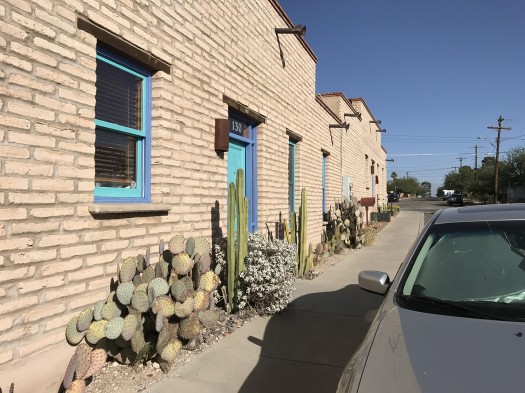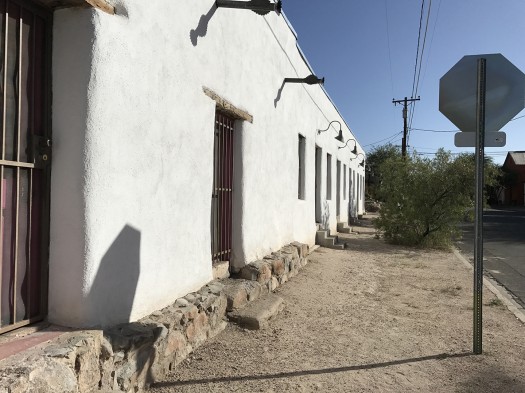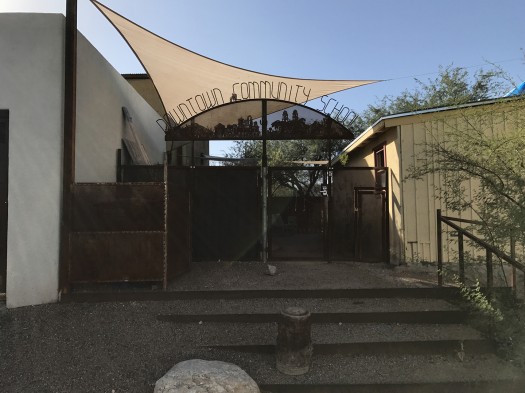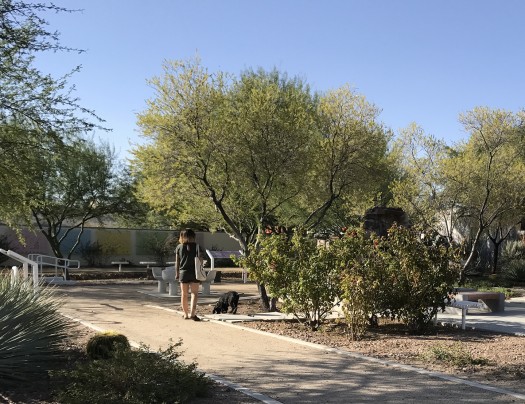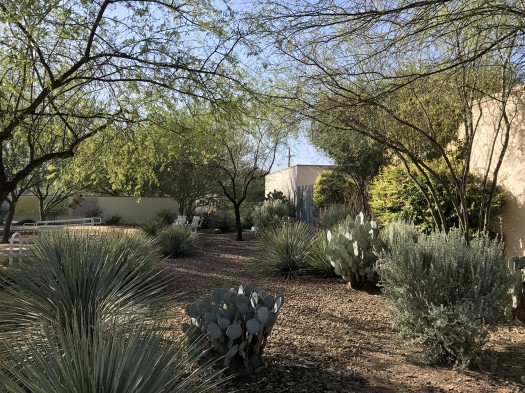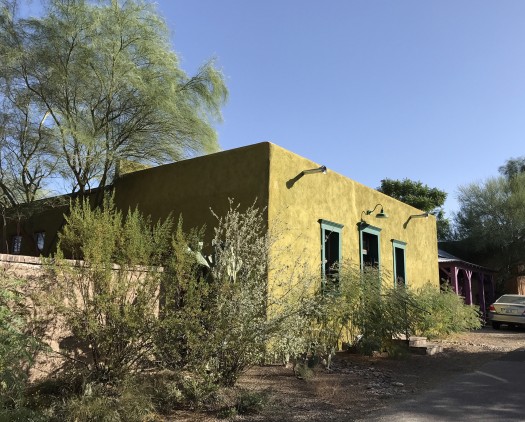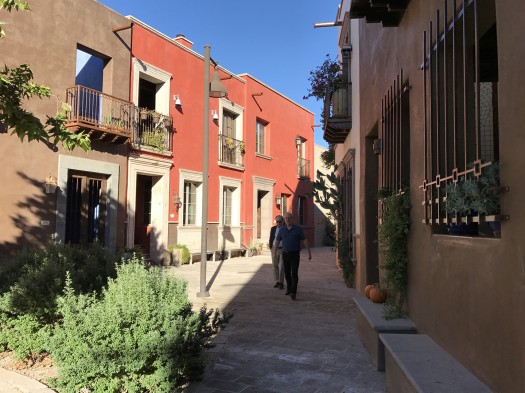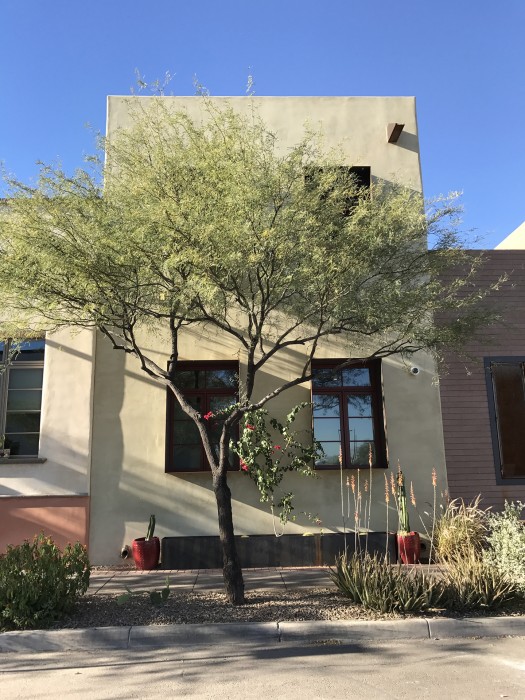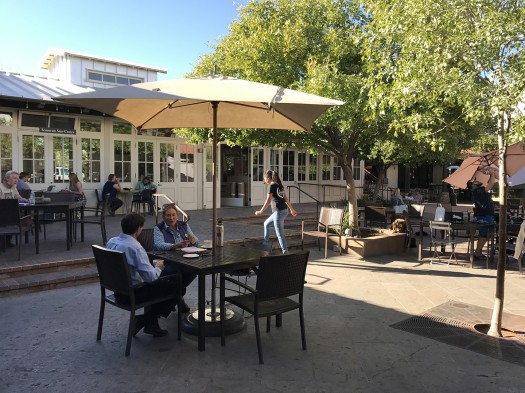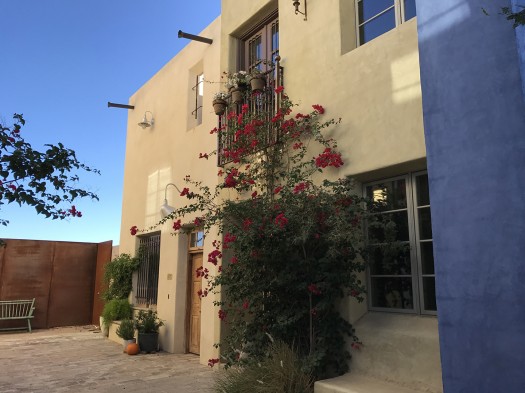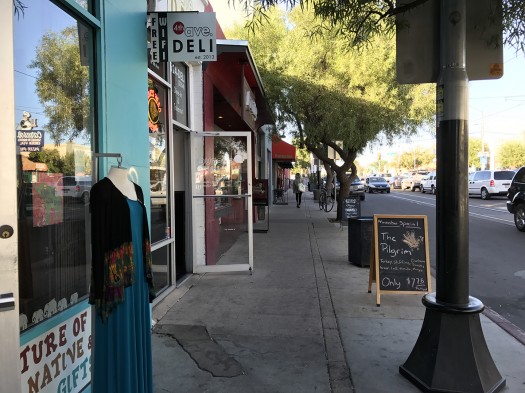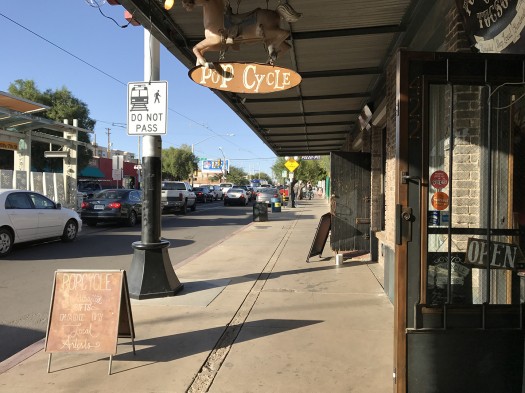A Placemaking Journal
Finding Tucson’s Lovable Places
I was inspired and delighted last week by working in Tucson and Marana, Arizona. Whenever we are writing character-based zoning, one of the first things we do is a regional tour to analyze the DNA of the most loved places. Places cannot be resilient unless they can be loved. It’s one of the basic principles of the Original Green, which says that buildings must be lovable, durable, adaptable, and frugal, and places must be nourishable, accessible, serviceable, and securable, in order to last and thrive. Extracting that lovable DNA and allowing it by right injects a sense of place into new development, as well as infill and redevelopment.
Lovable Urbanism at Barrio Viejo
Barrio Viejo is awash in color. With the literal translation of the “old neighborhood,” this is a great example of a beloved place. The Barrio was established in the 1880’s, sparked by the Southern Pacific Railroad. The neighborhood is purported to have the largest collection of 19th century adobe buildings in the United States.
Situated just south of downtown Tucson, much of the northern edge of the neighborhood was tragically razed to make way for the convention center. Walking these beautiful streets reinforces the fact that this wasn’t a good investment choice back in 1971, a last gasp of the ill-directed “urban renewal” movement.
One of the many important facets of why this neighborhood is so lovable is the civic anchors. Schools, museums, parks, and places of worship are all at the neighborhood scale, blending easily into the surrounding houses, apartments, elder housing, and offices. As a result, meaningful destinations and safe routes to school abound. What’s missing in the Barrio are corner stores and a commercial street, which were part of the losses to the northern end of this historic neighborhood.
All images below can be clicked for a larger view, and are CreativeCommons ShareAlike Licensing, with attribution to Hazel Borys.
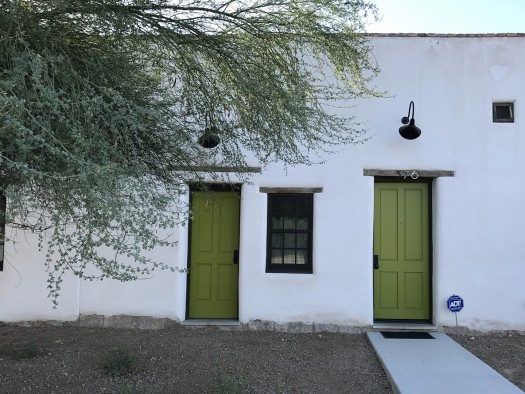
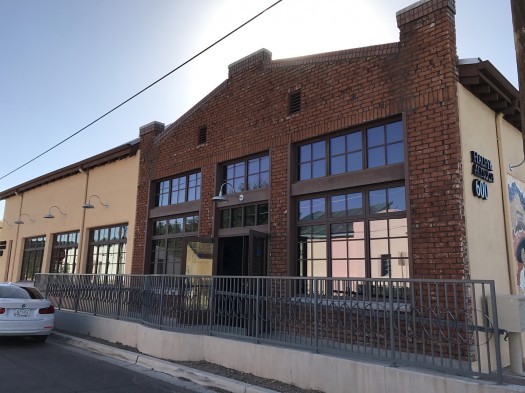
Local Character at The Mercado San Agustin
The recently built Mercado San Agustin – designed by Moule-Polyzoides Architects and Bill Dennis – does a great job of extracting much of the DNA of the Barrio Viejo and updating it to today’s market demands. A central marketplace offers fine dining as well as Mexican street food, and is at a rail stop on the Tucson streetcar line. Situated just west of downtown Tucson, the district is an easy ride or long walk to the civic heart of the region.
The Mercado handily illustrates how architectural styles mix better when the urbanism does not experience wide variations in character. As long as the form and massing – frontage build-out, setbacks, heights, and private frontage types – are similar, contemporary architectural styles mix in easily with traditional ones.
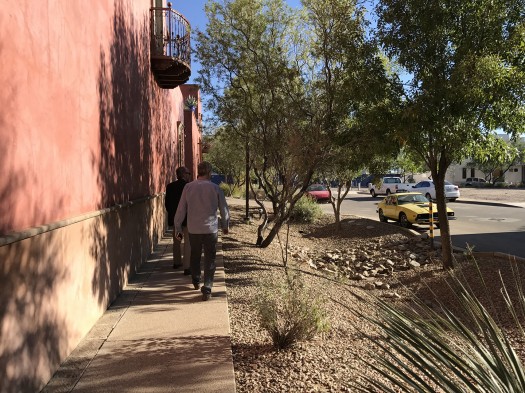
4th Avenue Retail Corridor Inspiration
From the Mercado District, the Tucson street car snakes through downtown, and then northward to 4th Avenue. Eclectic local retailers enjoy tiny 16’ wide storefronts mixed in with larger format offerings like the food coop and a great selection of local restaurants.
If you are checking out the urbanism in Tucson anytime soon, and you’re in for a culinary treat as well. Recent New York Times and USA Today articles both have some wayfinding advice for where to look for great local food.
Our personal lunch favorites were Goodness on Campbell Avenue and Rene’s Organic Oven on Tanque Verde. Dinners were particularly enjoyable at The Coronet on East 9th Street at 4th Avenue, Downtown Kitchen, Mercado San Agustin in the Mercado District, and Elvira’s on Central Avenue. In addition to wonderful dining, these dinner restaurants all enjoyed the benefit of great urbanism. In addition to wonderful dining, these evening restaurants all enjoyed the benefit of great urbanism. But we got the feeling that we were just scratching the surface. And the same goes for today’s review of regional urbanism.
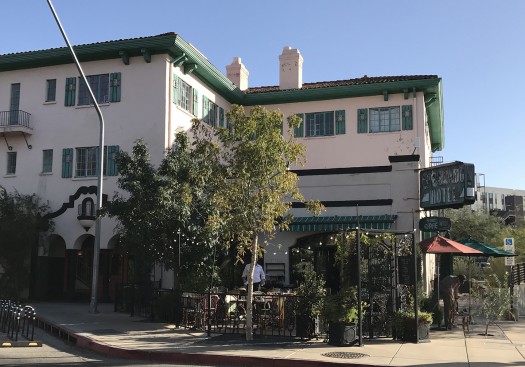
Grateful for the ongoing inspiration provided by looking carefully at local beloved urbanism. The threads that connect us to each other and to the places we call home are different colors and patterns wherever we go, with interesting similarities and differences. While it’s true that there are plenty of car-dependent patterns within the region that I have not pictured here, those aren’t the ones that interest me the most as we try to level the playing field to also allow for more livable, compact places.
–Hazel Borys
If PlaceShakers is our soapbox, our Facebook page is where we step down, grab a drink and enjoy a little conversation. Looking for a heads-up on the latest community-building news and perspective from around the web? Click through and “Like” us and we’ll keep you in the loop.









